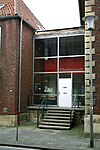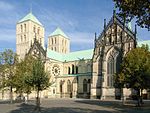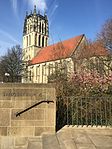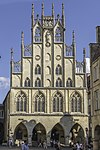Institute for New Testament Textual Research

The Institute for New Testament Textual Research (German: Institut für neutestamentliche Textforschung — INTF) at the University of Münster, Westphalia, Germany, is to research the textual history of the New Testament and to reconstruct its Greek initial text on the basis of the entire manuscript tradition, the early translations and patristic citations; furthermore the preparation of an Editio Critica Maior based on the entire tradition of the New Testament in Greek manuscripts, early versions and New Testament quotations in ancient Christian literature. Under Kurt Aland's supervision, the INTF collected almost the entire material that was needed. The manuscript count in 1950 was 4250, in 1983, 5460, and in 2017 approximately 5800 manuscripts. Moreover, INTF produces several more editions and a variety of tools for New Testament scholarship, including the concise editions known as the "Nestle–Aland" – Novum Testamentum Graece and the UBS Greek New Testament. Many of the results are also available to the wider public at the adjoining Bible Museum, which is affiliated with the institute. First supplements of the Editio Critica Maior with the Catholic epistles and the Acts of the Apostles have been published since 1997.
Excerpt from the Wikipedia article Institute for New Testament Textual Research (License: CC BY-SA 3.0, Authors, Images).Institute for New Testament Textual Research
Pferdegasse, Münster Altstadt (Münster-Mitte)
Geographical coordinates (GPS) Address Nearby Places Show on map
Geographical coordinates (GPS)
| Latitude | Longitude |
|---|---|
| N 51.961111111111 ° | E 7.6236111111111 ° |
Address
Pferdegasse 1
48143 Münster, Altstadt (Münster-Mitte)
North Rhine-Westphalia, Germany
Open on Google Maps









